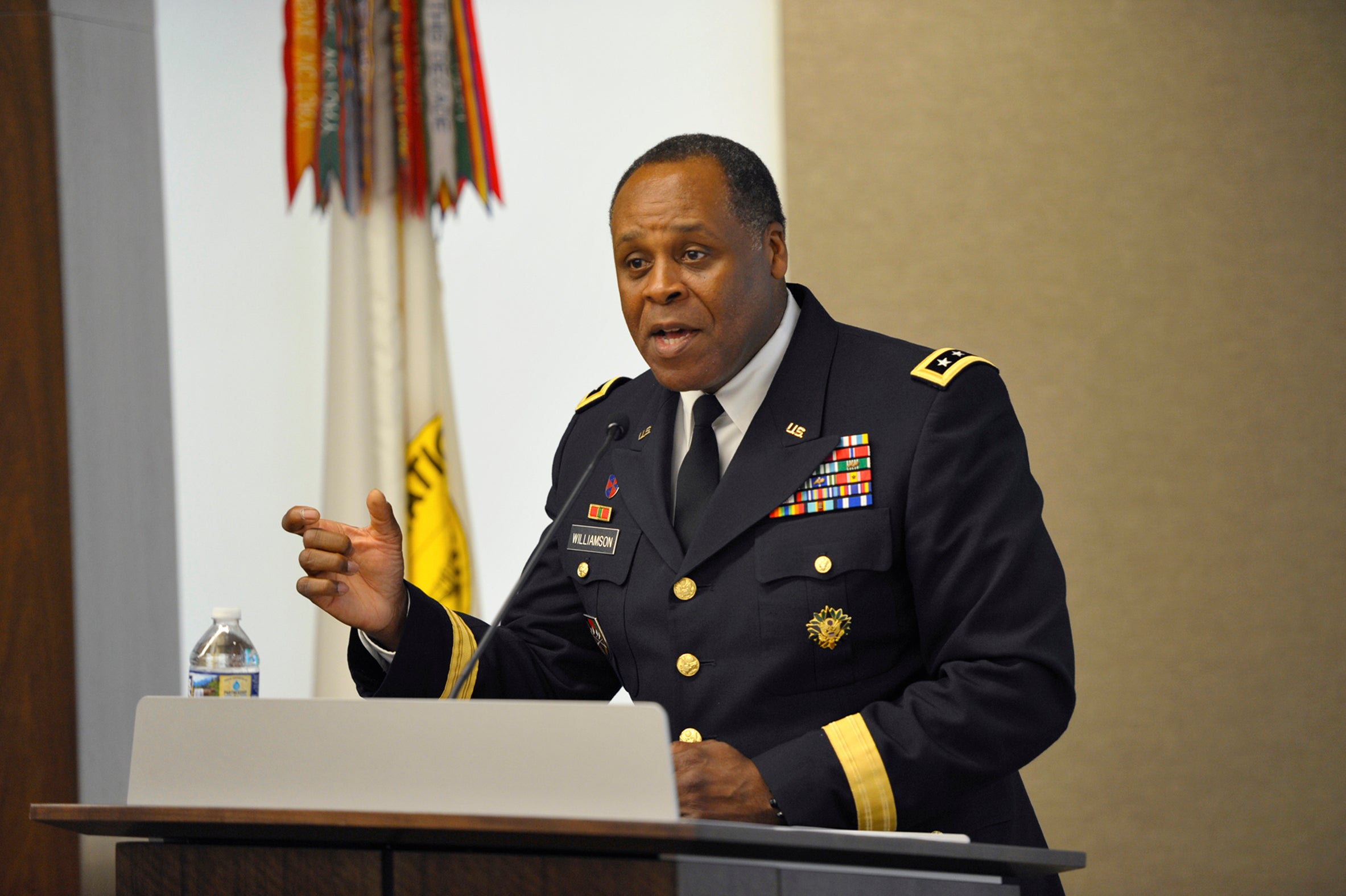Keeping a technological edge over adversaries requires the Army to cut the length of time it takes to get new weapons and equipment into the hands of soldiers, according to a top Army acquisition official.
“If it takes eight to 10 years to build a weapons system, we are already two generations behind,” said Lt. Gen. Michael E. Williamson, principal military deputy to the assistant secretary of the Army for acquisition, logistics and technology, at a July 13 breakfast hosted by the Association of the U.S. Army’s Institute of Land Warfare.
“Our adversaries – state and nonstate actors – are continuing to invest in technology, unburdened in many cases by some of the processes, laws and responsibilities we have in terms to getting those capabilities to our soldiers,” Williamson said at the breakfast, held in the AUSA Conference and Event Center in Arlington, Va.
Adding, “Our speed to market has to change. Our ability to get it into soldiers’ hands quickly has to change. We don’t have the luxury of waiting four, eight, 12 years. The access to technology today by our enemies has changed the equation.”
The Army’s investment strategy starts with modernization, “which means considering those things we’re not going to keep,” he said. “The start of our modernization strategy is divestiture.”
In that context, the Army must dispel the traditional shroud of “protectionism” that often surrounds existing systems, Williamson said.
Another thing the Army cannot afford to continue to do, Williamson said, is have “one-off” systems that create integration challenges not only within the U.S. Army, but with joint and coalition partners.
He said that one example of a successful effort is the Joint Battle Command-Platform (JBC-P), which many people call Blue Force Tracking.
“It [JBC-P] is integrated on more than 120,000 platforms across the Army, and each one of our combat brigades has that capability. It’s standard,” Williamson said.
“What we’ve done from that original baseline, because we understood the architecture and understood the way it’s deployed and used, we’ve had the ability to incrementally improve it, adding cyber protection capability, speedier transmission times, and logistics-based support,” he added.
“These neat one-off ideas may sometimes sound cool, but we have to decide if they fit into the Army’s baseline,” Williamson said.
“Our responsibility is to provide for, empower, unburden and protect our soldiers in an environment that has a great deal of uncertainty and complexity,” he said.
The Army operates in very difficult environments, “and we do that all over the world, every day,” Williamson said. “At any given time, we have about 187,000 of our soldiers forward deployed or in an operation.”
“Our responsibility is to ensure that every soldier we deploy is equipped to achieve decisive overmatch, regardless of the mission,” he noted.


